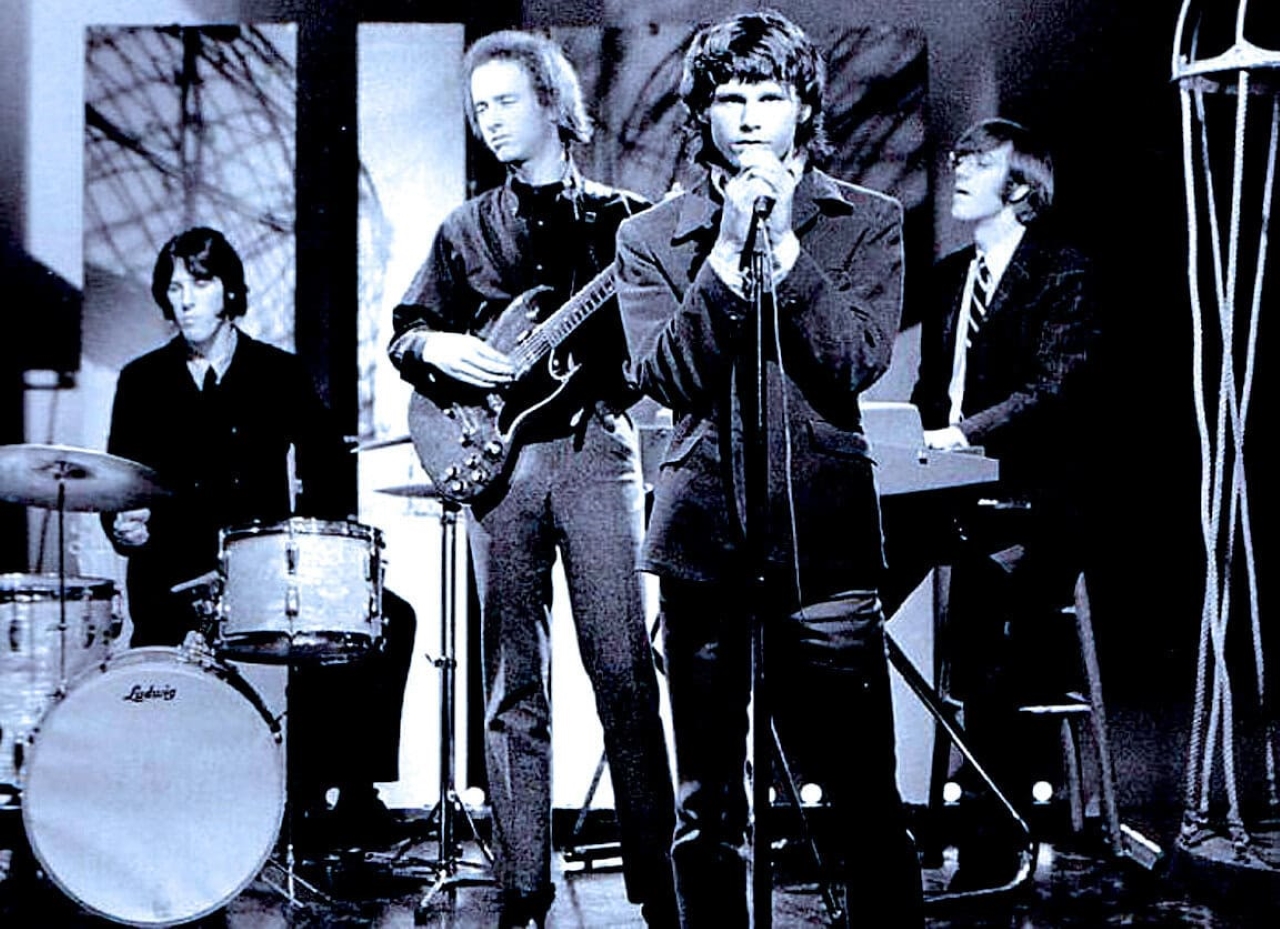🔥 The Song That Was More Than a Song
“When the Music’s Over,” stretching past eleven minutes, wasn’t designed for the radio. It wasn’t built for commercial charts. It was a declaration, a ritual, a communion between The Doors and their audience. From the moment Ray Manzarek’s organ laid down its hypnotic opening riff, the track transported listeners into an altered state. By the time Jim Morrison’s voice entered—half sermon, half exorcism—it was clear this was no ordinary rock song.
To Morrison, music wasn’t just entertainment. It was a gateway. A sacred fire. A way to “break on through” to something larger than life. And in “When the Music’s Over,” perhaps more than any other Doors track, we see him transform a stage into a temple.

🌌 Music as a Doorway to Transcendence
Morrison had devoured the works of poets and philosophers—Nietzsche, Rimbaud, Blake. He understood art not as a pastime, but as a form of higher truth. When he screamed “Cancel my subscription to the Resurrection!” it wasn’t just a lyric; it was an invocation, a rejection of the sanitized versions of life and death handed down by institutions.
His repetition of the line “We want the world and we want it… now!” was both prophecy and demand. It turned concerts into collective moments of rebellion, where music was no longer background but frontline. Morrison didn’t just want to sing; he wanted to awaken something primal in his listeners—the same something that ancient tribes had summoned with drums and chants.
🔮 Live as Ritual: Morrison the Shaman
The Doors’ live performances of “When the Music’s Over” were legendary, and often terrifying. Morrison would stretch the song, letting the band fall into extended improvisations as he prowled the stage like a possessed priest. He whispered, he howled, he fell silent for long, tense moments before exploding with volcanic energy.
For Morrison, the concert was not a show but a rite. He often spoke of himself not as an entertainer, but as a conduit for energies larger than himself. “I am interested in anything about revolt, disorder, chaos,” he once said. “I want to be free.” Onstage, he invited his audience into that chaos, to confront themselves, to lose control.
In “When the Music’s Over,” the line “What have they done to the Earth?” became a lament for nature desecrated by modern industry. Morrison’s voice cracked with anguish, his delivery closer to a prophet’s cry than a rock singer’s verse. Audiences often left stunned, shaken, as though they had attended a ritual sacrifice rather than a concert.
🌀 The Doors’ Sonic Architecture
Behind Morrison’s incantations stood a band uniquely suited to channel his visions. Ray Manzarek’s organ played the role of both rhythm and mystic atmosphere, filling the absence of a bassist with something spectral. Robby Krieger’s guitar weaved around the spaces Morrison created, often jagged, often lyrical, like sparks in the dark. John Densmore’s drumming was the heartbeat—sometimes a steady tribal pulse, sometimes erupting into chaos as Morrison pushed the music into uncharted terrain.
Together, they weren’t just backing a singer. They were midwives to a trance. Their eleven-minute performance wasn’t indulgence—it was architecture, scaffolding for Morrison’s explorations into sound and spirit.
✨ Poetry, Politics, and Prophecy
The late 1960s were boiling with unrest: Vietnam, civil rights struggles, student protests. Morrison channeled this turbulence into “When the Music’s Over.” The line “We want the world and we want it now!” echoed the cries of a generation refusing to wait for justice. At the same time, Morrison’s environmental plea—“What have they done to the Earth?”—was prophetic, decades before ecological awareness became mainstream.
But the song was not simply political. It was spiritual. It suggested that music itself was the last refuge, the last sacred act in a world crumbling under violence and greed. If politics failed, if religion was corrupted, perhaps music could still save souls.
🌙 The Darkness and the Light
Yet Morrison’s vision was not one of easy salvation. His rituals demanded sacrifice. “When the Music’s Over” was filled with both beauty and terror, ecstasy and destruction. Morrison seemed to believe that true liberation required going through the fire, facing death, chaos, and madness.
Onstage, when the band reached the song’s climax, Morrison would often scream as if exorcising demons. And in a way, he was—both his own demons and those of the audience. Listeners weren’t simply entertained; they were purged, challenged, unsettled.
It was this willingness to confront darkness that made The Doors unique. Other bands sang of love, protest, or psychedelia. The Doors offered a descent into the underworld and a promise—though never a guarantee—of rebirth on the other side.
📀 Legacy of a Ritual Song
“When the Music’s Over” never became a radio hit. It wasn’t designed to. Instead, it became one of The Doors’ most revered live staples, a song that defined their concerts. For fans, it was proof that The Doors weren’t simply a rock band—they were something more dangerous, more sacred, more necessary.
Today, listening to “When the Music’s Over” still feels like entering a temple of sound. Morrison’s voice remains raw, urgent, alive, as though he’s still reaching across time to demand something from us: awareness, rebellion, transcendence.
And perhaps that’s the true genius of the song. It wasn’t only about what happened when the music played—it was about what lingered after the last note faded.
🎶 One Song, One Invocation
For Jim Morrison, music was a ritual of freedom, a sacred act of rebellion. “When the Music’s Over” stands as his manifesto, a song where rock became religion, and the stage became an altar.
Even today, when the music’s over, the echoes remain.